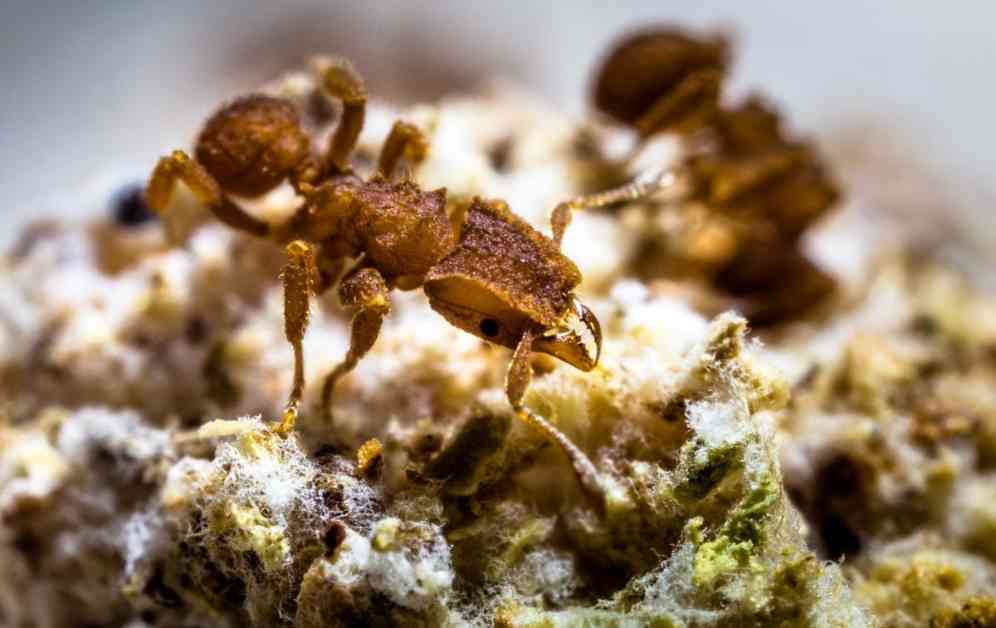When a massive asteroid hit Earth 66 million years ago, it caused a mass extinction event that wiped out most of the dinosaurs. However, it also led to new relationships forming between ants and fungi. In the aftermath of the cataclysm, plants struggled to grow back, but fungi thrived. Ants began to cultivate this fungus as a new food source, leading to the evolution of agricultural ants.
Although farming is typically associated with humans, many species of ants have developed symbiotic relationships with fungi. Researchers have identified around 250 ant species in the Americas and Caribbean that engage in fungus farming. This mutually beneficial relationship involves ants collecting and spreading fungi while defending their food source. The exact origins of this close relationship were unclear until recently.
Ted Schultz, a curator of ants at the Smithsonian’s National Museum of Natural History, and his colleagues conducted a study that analyzed genetic data from 276 ant species and 475 fungi species. The results indicated that agricultural ants evolved approximately 66.65 million years ago, around the time of the asteroid impact. This timing coincided with a period of fungal proliferation due to the environmental conditions caused by the catastrophe.
The research suggests that the aftermath of the asteroid impact created an opportunity for ants to begin farming fungus as a survival strategy. This new form of agriculture allowed ants to thrive in a world where photosynthesis was severely impacted. Over time, some ant species developed more complex relationships with their fungal food sources, similar to modern-day leafcutter ants that cultivate fungus by feeding it with leaves.
As Earth underwent significant environmental changes around 27 million years ago, ants adapted their farming practices to survive in new habitats. They spread into grasslands and continued to cultivate fungus in their nests. The study also revealed that some ants began practicing “higher agriculture,” which involved more sophisticated farming techniques.
By understanding the evolutionary timeline of ant agriculture, researchers can gain insights into how these insects developed their farming skills. Ants have been able to cultivate fungus and ensure their survival without the advanced planning abilities of humans. Studying these farming ants provides valuable information about how Earth’s ecosystems recovered from past disasters and adapted to changing environments.
The research sheds light on the resilience of nature and the intricate relationships that have evolved between different species over millions of years. Despite the challenges posed by events like mass extinctions, life finds a way to adapt and thrive. The study of farming ants serves as a reminder of the resilience of Earth’s ecosystems and the interconnectedness of all living organisms.













